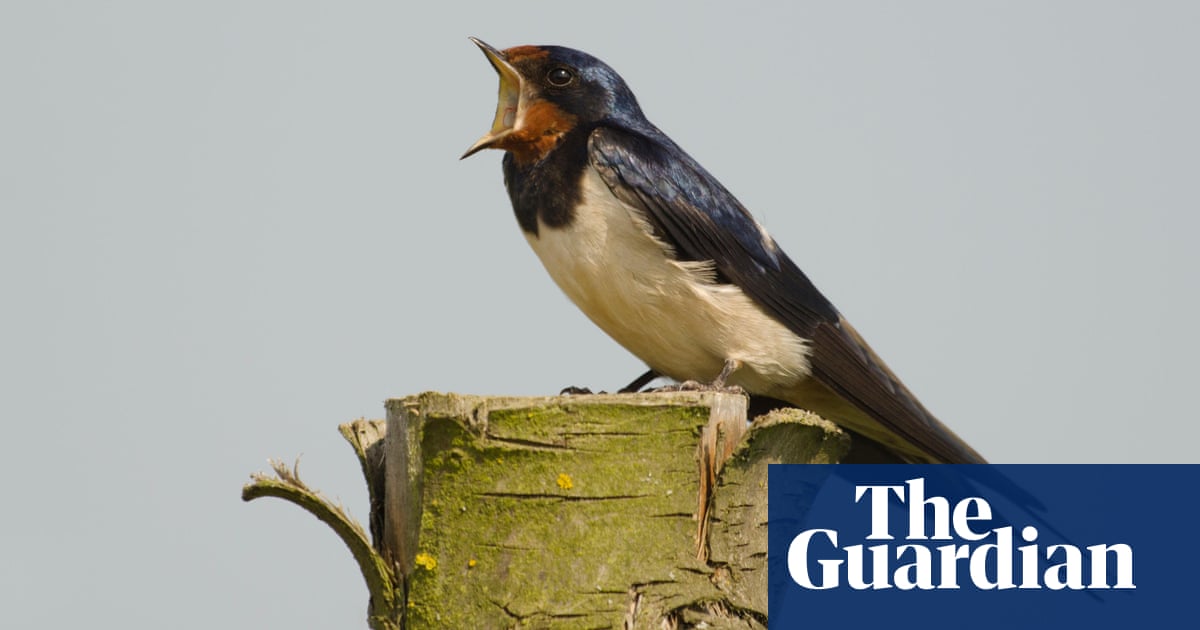
Swallows, swifts and house martins were once a common sight over UK towns and cities, dextrously catching insects on the wing. But these spring and summer visitors are becoming increasingly rare, according to the definitive survey of the country’s birds.
Populations of these insect-eating birds have dropped by 40% or more in the past decade, according to the latest Breeding Bird Survey (BBS) report.
The decline of insects means there is less food around for these birds and their chicks. There are also fewer places for them to nest as old houses are renovated, leaving fewer gaps in roofs and eaves.
Farmland and woodland birds are also in decline, with the turtle dove – which was once a common sight on agricultural land – showing a reduction in numbers of 97% since 1995. It is now so rare experts can no longer monitor it effectively. Other farmland birds such as grey partridge, lapwing and curlew have all seen their numbers at least halve during the same period.
“Along with aerial insectivores, several other groups have experienced sustained long-term declines,” researchers wrote in the report, which produced population trends for 119 species. In total, 42 species are in decline.
The BBS is one of the UK’s longest-running citizen science projects, reliant on the work of nearly 9,000 enthusiasts. One hundred people have been submitting records for all 30 years that it has been running.
Common terns declined substantially between 2022 and 2023, with avian flu known to have wiped out large numbers. Other insect-eating birds are also sharply declining, with spotted flycatchers and pied flycatchers having declined by 68% and 59% respectively in the past 30 years.
Dr James Heywood, a BBS national organiser, said: “The report highlights declines in wide-ranging groups of species, from birds reliant on insects, farmland and woodland birds, as well as pointing to additional and acute challenges like avian flu.”
However, it is not all bad news. Birds such as goldfinches, great spotted woodpecker and nuthatch are doing relatively well. Red kites have been a major success story, with numbers increasing by 2,200% since the survey started. Little egrets – which are making a comeback in the UK – have increased by 2,300%.
In total, a fifth of the 35 species showing increases are non-native birds, including the ring-necked parakeet and Egyptian goose.
The survey is a partnership project between the British Trust for Ornithology, the Joint Nature Conservation Committee and the Royal Society for the Protection of Birds (RSPB).
Simon Wotton from the RSPB said: “By looking at this valuable long-term data we can see which species most need our help and where our efforts are best spent when addressing the nature and climate emergency. The changes in range and abundance of some of our bird species should give us cause for concern, and impetus for action.”












